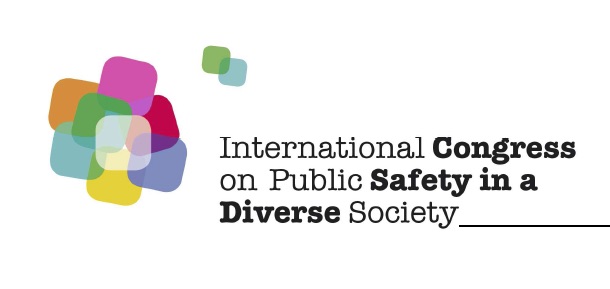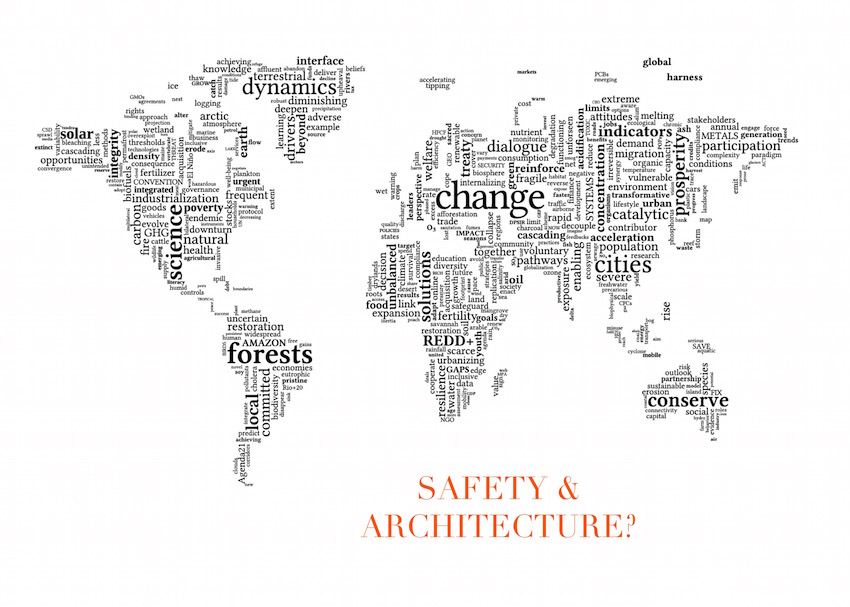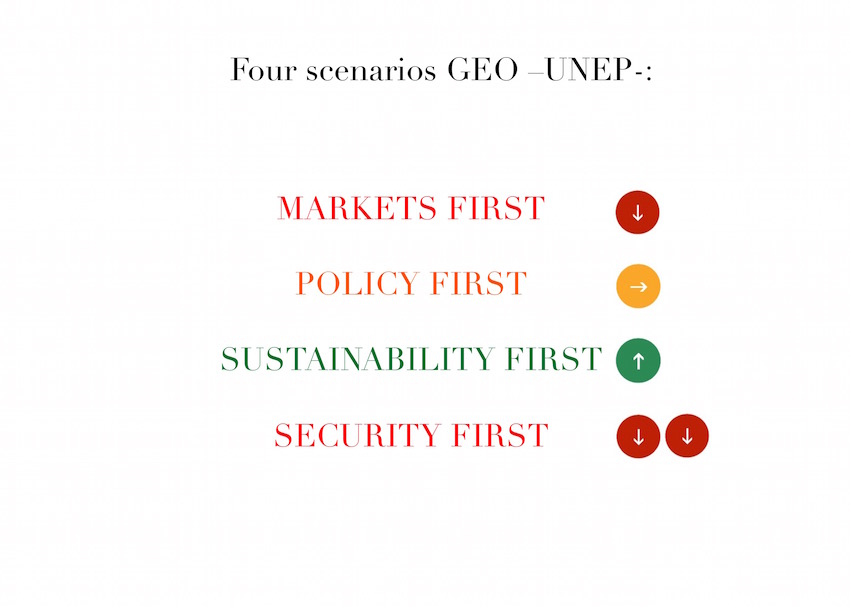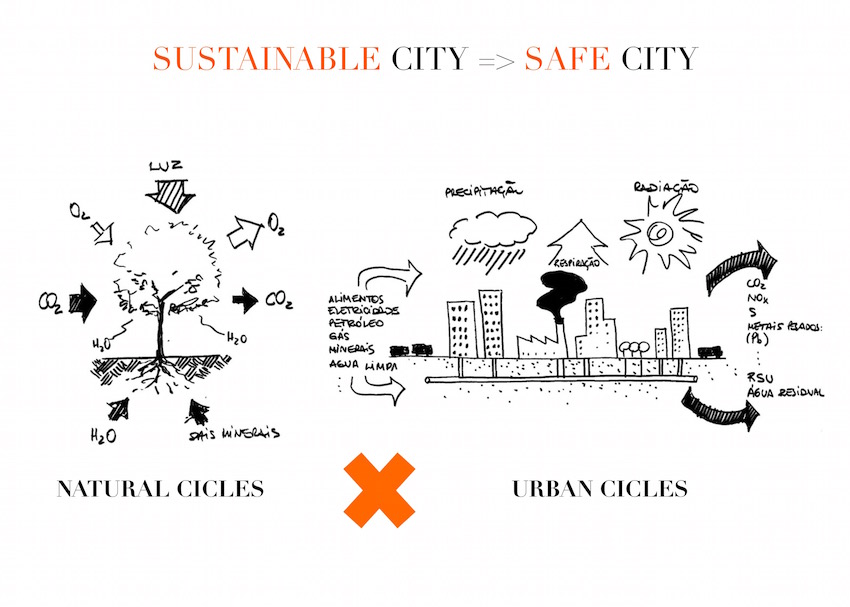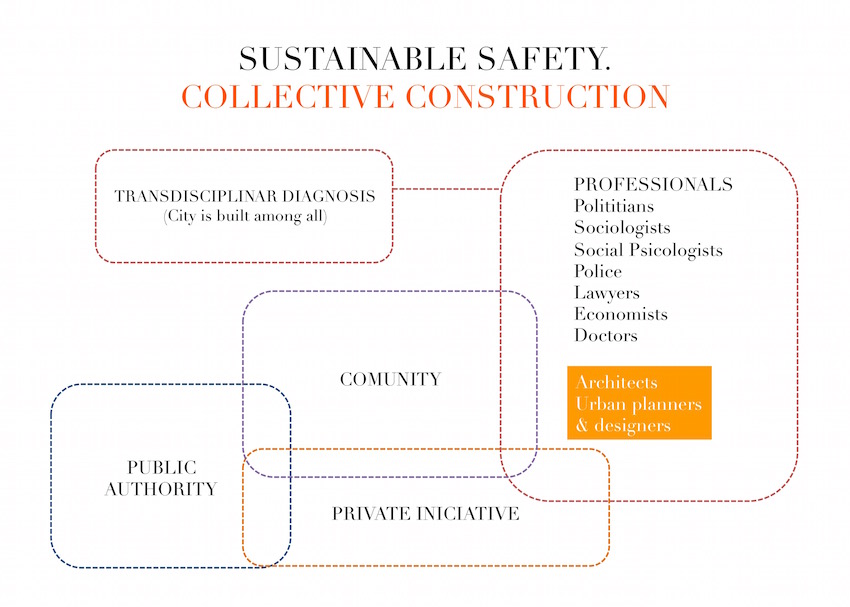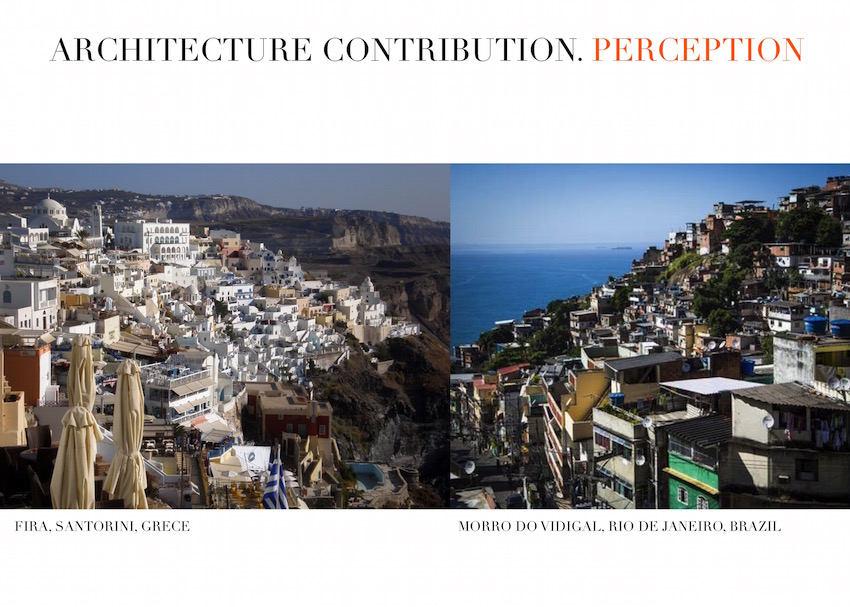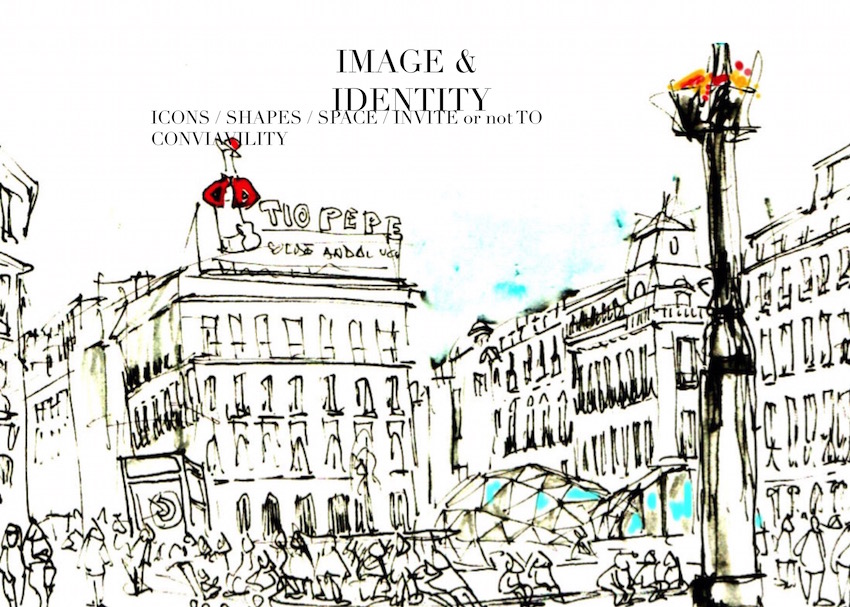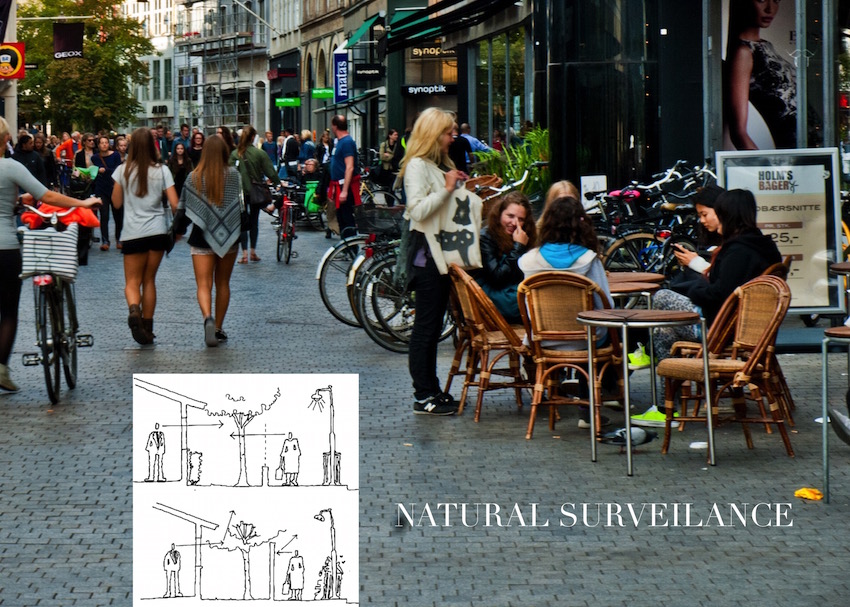Leecture and article for the International Congress on Public Safety in a Diverse Society, Madrid, 2011.
Authors: Raúl Alonso Estébanez & Interurbano, as IE University Public Safety Community Programme Urbanism Team Manager.
Coordinator: Miguel Angel Gandarillas Solinis
Violence and crime affect co-existence and life quality. Safety perception -subjective safety- plays an important role when assessing quality of public spaces. There is a general consensus that subjective safety and certain types of crime can be reduced on urban public spaces if they are conceived and designed properly.
To achieve the success and sustainability of actions taken to reduce violence on public spaces, they should be part of an ambitious prevention strategy that addresses all issues related to the site safety, considering crime as a complex and multi-origin phenomenon. Many architects don´t use the wide range of theories and design tools that take into account safety issues because they ignore them. To do it properly, it´s necessary the rapprochement among architectural practices and other specialities, and citizen participation in urban processes. Safe urban design is simply a good design, which facilitates the use of a place and the welfare of the users, is attractive and special, and helps to minimize conflicts and incompatibilities of coexistence.
Having all these considerations into account, we can evaluate the quality of any public space, proposing and analysing strategies for an environmental design aimed at increase the sense of safety in the urban space, having existing and contrasted methodologies as working references.
Core issues to be consider for the analysis and diagnosis of these spaces are: Identity // Image // Accessibility // Visibility // Natural surveillance // Cleaning and maintenance // Environmental comfort

